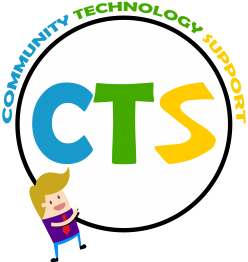Firstly what is Artificial Intelligence (AI)?, This is hard to define as this question also implies that we agree on the definition of intelligence and on the goal of developing AI. Howard Gardner (1983) floated a theory of Multiple Intelligence in his book Frames of Mind: The Theory of Multiple Intelligences. In this book, he listed 8 possible types of intelligence. These are musical, visual-spatial, verbal-linguistic, logical, bodily, interpersonal, interpersonal and naturalistic. AI should be able to demonstrate at least one to be classified as intelligent. According to IBM, among other things, AI must also include Machine Learning (ML) which allows it to learn from others and from its own mistakes or failures. ML
The broad goal of AI is to make computers mimic the ability of humans to learn, react and create all while interacting with their environment. AI also has the potential to think in abstract ways to solve human problems.
We have all interacted with AI in form or another whether you have known about it or not. Some games have AIs in the form of bots, think
Some common AI’s we have interacted with are Siri, Alexa and Google Home. These helpful assistants are narrow AI where they can only search in specific predetermined ways (algorithms). These AI’s cannot process information in abstract ways or think beyond what you asked of them. The learning that some of these assistants perform is to improve their voice recognition abilities and reading emails your emails (if you let it), but even this is not perfect though. They can also be linked to ‘Internet of Things’ (IoT) devices, which includes lights, heaters and more. They can learn what to do when you say a specific command i.e. “Siri turn off the bedroom lights”. While they are an example of verbal AI, you cannot have a conversation with them yet.
Back in 2015 Yamaha produced a robot that can ride a motorbike called MOTOBOT with spatial AI. This robot can learn to ride a motorbike by practicing on a racetrack with the goal such as doing a lap as fast as possible. Yamaha did this was so that they can test the motorbikes more consistently. They also wanted to test the limits of the bike rather than a human rider wanting to stay alive! Imagine what MOTOBOT could do if it could directly control each part of the engine and not just the throttle, brake, gears and tilt.
Can an AI with predefined rules learn to be better, to be faster and to make a better version of its self? yes, this has already happened. However, can AI learn to have a personality or emotions of its own? Learning from its environment, it may be able to emulate and understand us. It is this question that has sparked the imagination of many science fiction writers, computer scientists, and philosophers alike. A Sci-Fi robot which that emotions there’s none other than Marvin the Paranoid Android in ‘Hitch Hikers Guide to the Galaxy’ by Douglas Adams. Marvin demonstrates each of types of intelligence outlined by Howard Gardner but can also learn from multiple types of inputs. We are a long way from this with both the limitations of AI current abilities and a body for it to reside in.
References:
http://www.academia.edu/download/35264060/Gar.pdf
https://towardsdatascience.com/clearing-the-confusion-ai-vs-machine-learning-vs-deep-learning-differences-fce69b21d5eb
https://www.forbes.com/sites/bernardmarr/2016/12/06/what-is-the-difference-between-artificial-intelligence-and-machine-learning/
https://blogs.nvidia.com/blog/2016/07/29/whats-difference-artificial-intelligence-machine-learning-deep-learning-ai/
https://www.sciencedirect.com/science/article/pii/S0007681318301393
https://global.yamaha-motor.com/showroom/motobot/index.html
Hitch Hikers Guide to the Galaxy
Ghost in the Shell (1995)

Hey There. I found your blog using msn. That is a really smartly written article. I’ll be sure to bookmark it and return to learn extra of your helpful info. Thank you for the post. I’ll definitely comeback.
I’m very happy to read this. This is the kind of manual that needs to be given and not the random misinformation that’s at the other blogs. Appreciate your sharing this best doc.